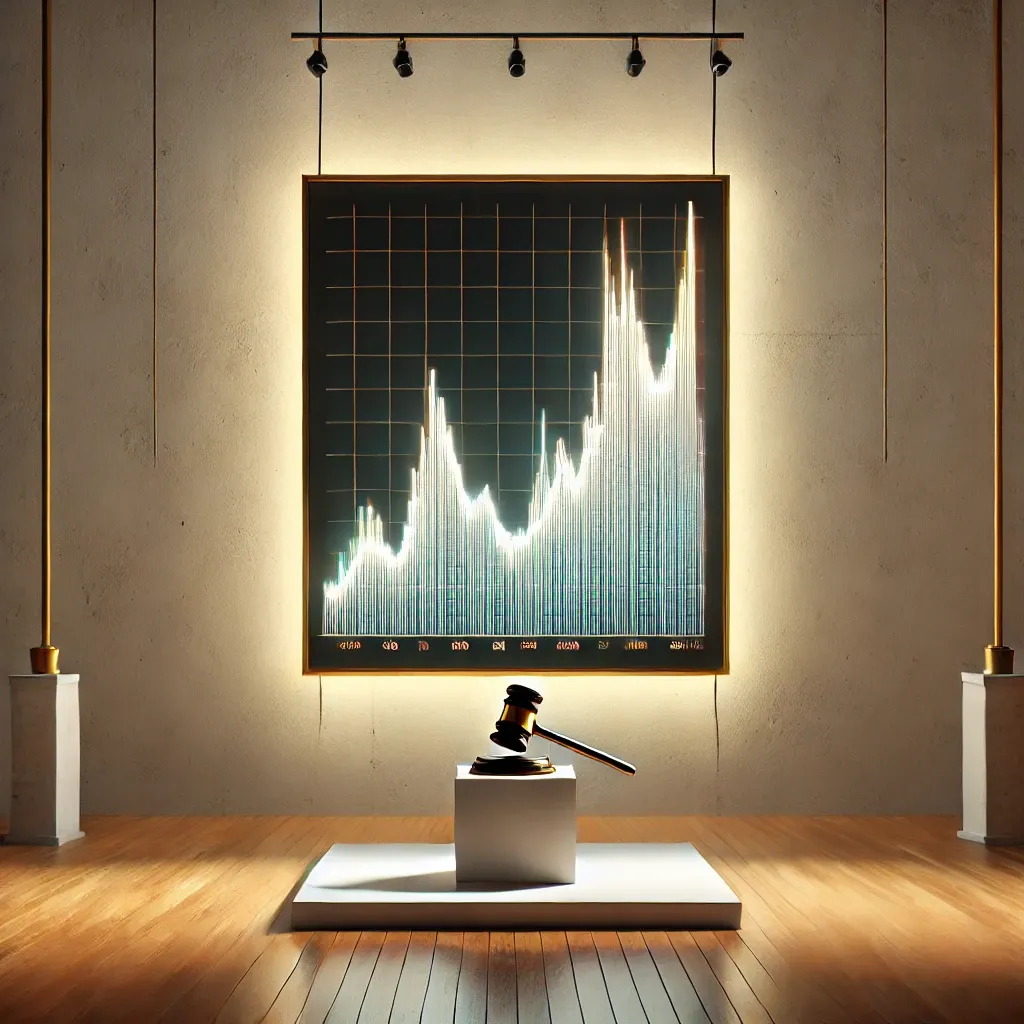Digital art, born as a promise of aesthetic and social revolution, is now imprisoned by a paradox: while its nature is one of expansion, reproducibility, and accessibility, artists find themselves constrained by the straitjacket of artificial scarcity. What could have been a fertile ground for innovation and democratization has been transformed into a speculative game, where anonymous investors pull the strings and artists become mere pawns. The neoliberal market sees digital art not as an opportunity for creative expansion but as a stage to replicate its speculative dynamics.
Under neoliberalism, everything becomes a commodity — from bottled water to ethics. With digital art, the market packages its intrinsic fluidity into NFTs (non-fungible tokens), creating an illusion of rarity for something fundamentally abundant. As such, digital art is co-opted as a financial asset. Once a challenge to traditional models due to its ease of distribution, it is now shackled by the speculative logic of platforms like OpenSea, which promise inclusion while reproducing the exclusionary hierarchies of the conventional art market.
An NFT can be likened to the Mona Lisa locked in an imaginary vault. The Mona Lisa is a cultural icon because it resides in the Louvre, accessible to the world. On the other hand, an NFT is artificially restricted private property, its value determined by the number of zeros in a digital transaction. Paradoxically, the more attempts are made to limit the reproducibility of digital art, the more its essence of sharing is denied, reducing it to a mere number in a blockchain contract.
Moreover, the environmental impact of blockchain technology must be addressed. The production of NFTs consumes significant energy, contradicting the progressive values often associated with digital art. While artists and collectors showcase their acquisitions as signs of innovation, the ecological cost of this practice remains in the shadows, creating a paradox in which the art of the future contributes to the degradation of the present.
The Paradox of Democratization and Exclusivity
Digital art promised to break down walls. Instead, neoliberal logic has erected fortresses. While digital platforms claim to democratize access to creation and distribution, they concentrate wealth and power. Only a few artists gain visibility, while the majority remain invisible, echoing the elitism of traditional galleries. Inclusion? It is more like a distorted mirror reflecting the structural inequalities of the market.
The tension between abundance and scarcity illustrates a central conflict: digital art is inherently collective and accessible, yet the market insists on transforming it into an exclusive object. Scarcity is fabricated, as what is at stake is not the artwork itself but the status it confers. Thus, artistic creation becomes hostage to the market, making the artist a brand manager compelled to appease algorithms and investors.
This exclusivity also alters the relationship between the public and the artwork. Digital art, which could be experienced in a shared and collaborative way, is isolated in private collections, often inaccessible to the general public. This practice reinforces a passive consumption model, where art becomes a symbol of power rather than a vehicle for social transformation.
Resistance to the Digital Horizon
However, not everything is co-optation. Collectives like Critical Art Ensemble and artists like Caleb Larsen use the digital medium to critique neoliberal logic. The irony is their weapon: while NFTs sell themselves as revolutionary, these artists create works that expose their speculative superficiality. The free distribution of works, collaborative projects, and practices that subvert traditional hierarchies provide a counterpoint to commodification.
Initiatives such as open-source platforms for digital art distribution also point to alternative paths. These networks, based on principles of decentralization, aim to ensure that art remains accessible and that artists retain control over their creations. Additionally, the growing adoption of more sustainable technologies, such as low-energy blockchains, offers a response to the environmental challenges faced by digital art.
Beyond individual efforts, institutional solutions are essential. Museums, universities, and cultural organizations have the power to promote artistic practices that value critical content and innovation rather than prioritizing mere commercial value. Public policies encouraging artistic production outside speculative dynamics could provide fertile ground for digital art to thrive in its fullness.
Reflecting on the relationship between neoliberalism and digital art means acknowledging its paradoxes, resistances, and possibilities. Only by rejecting artificial scarcity and embracing the transformative potential of digital art can we envision a more just and inclusive cultural future. It is in this balance between technology and ethics, market and creativity, that the true potential of digital art as a transformative force lies.
Victor T. Murari
Art History, Education & Artificial Intelligence | PhD | Advancing Educational and Cultural Narratives through AI Integration

